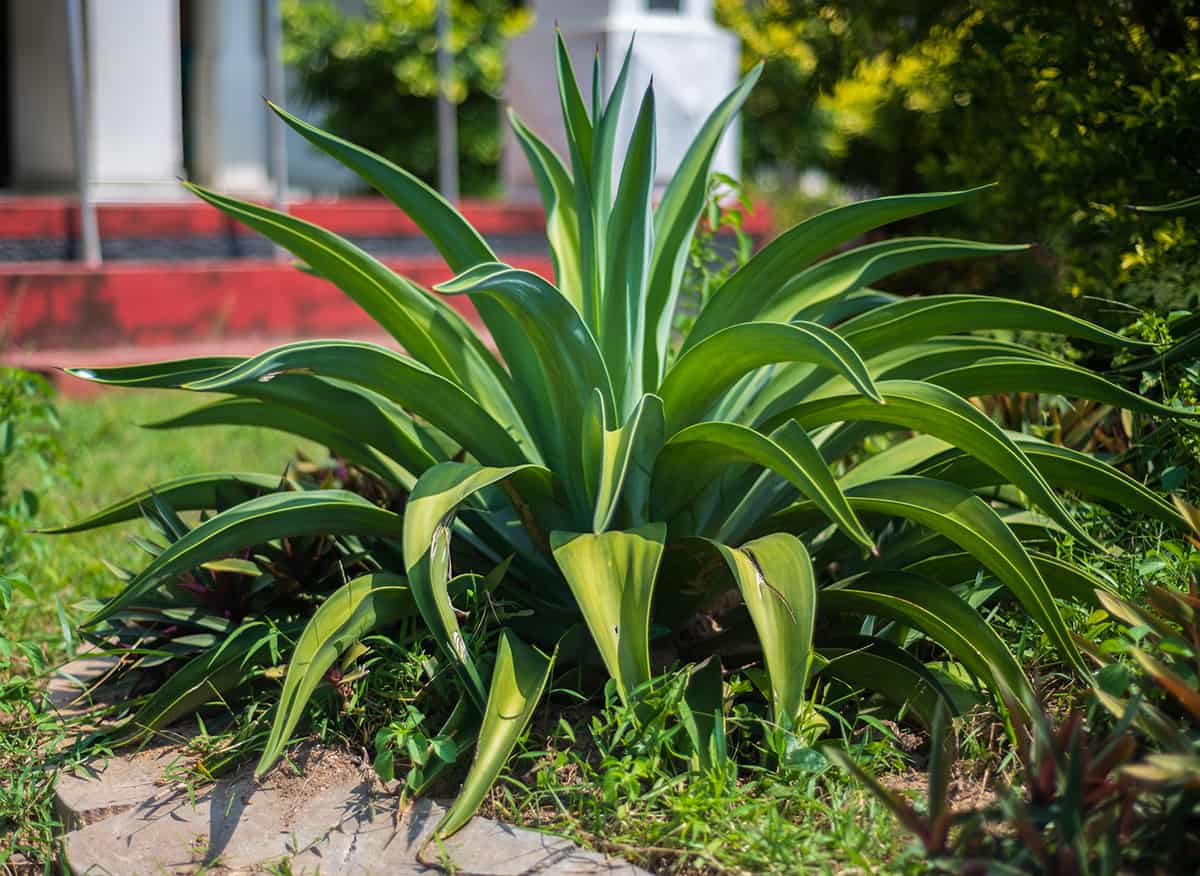You just got a new agave plant, charmed by its bold, architectural look that promises to jazz up your patio. But now you’re faced with a question: How do you keep this striking specimen thriving? Agave plants are not just beautiful—they’re also robust and low-maintenance, making them perfect even if your thumb isn’t quite green yet.
This guide will show you how to nurture your agave, ensuring it enhances your garden for years to come.
Table of Contents
Light
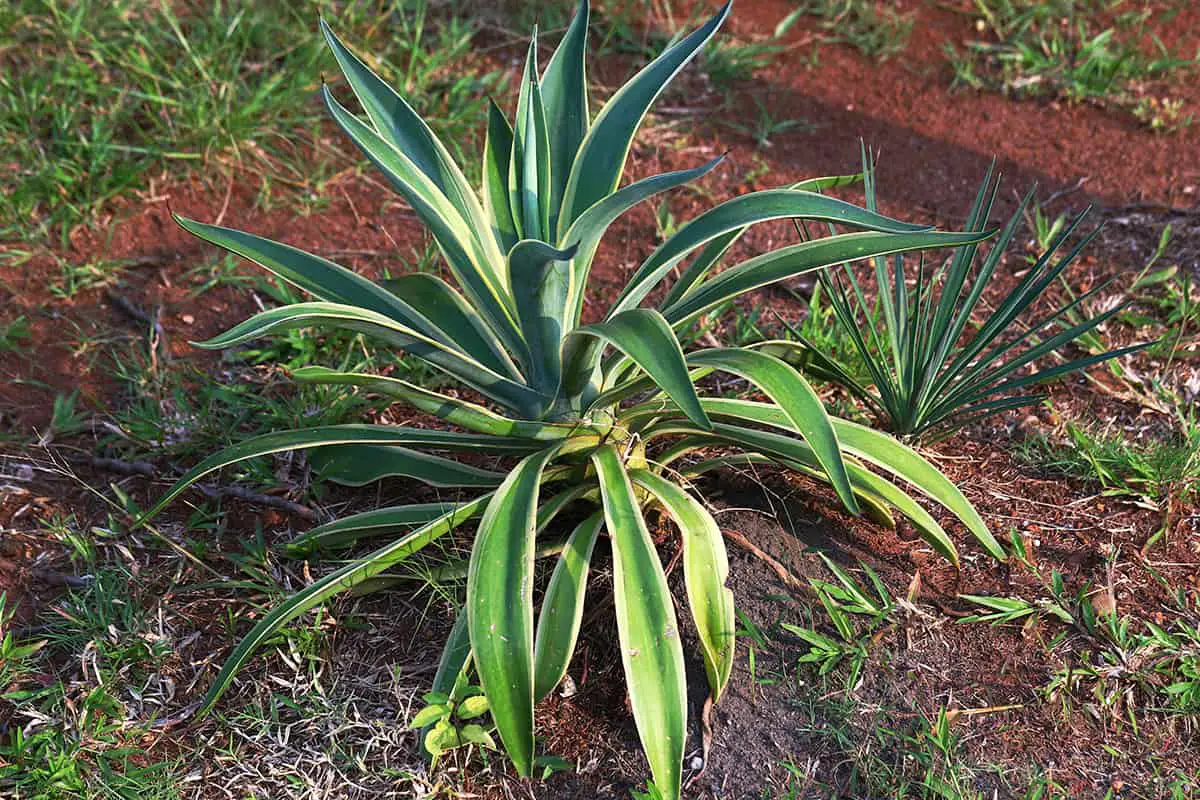
Agaves demand strong light to develop their best form and color. They flourish in full sun, which means they require six or more hours of direct sunlight a day.
If you live in a region with intense heat, some agave species can tolerate partial shade. This helps prevent potential sunburn. However, most agaves are desert succulents, adept at basking in the sunlight.
Ensure your agave plants get enough light, whether it’s in a sunny spot in your garden or a bright window indoors. The full sun encourages rapid growth and enhances the plants’ natural colors. If the light conditions are too low, your agaves may grow weakly and lack vibrant coloration.
Remember, light needs can vary between different agave species. Consult specific guidance for your chosen type to ensure optimal light conditions.
Soil
Your agave thrives in soil that drains well. This often means sandy or gravelly compositions. Ensure that your garden bed or containers allow water to escape easily. Stagnant moisture harms agave roots.
Agaves prefer soil that mirrors their native arid environments. If you have denser soil, improve drainage by adding perlite or coarse sand. You can prepare a mix resembling commercial cactus mixes with equal parts of sand, perlite, and peat.
If your soil holds too much water, agaves may suffer. Watch for signs of overwatering like soft, discolored leaves. To help your agave flourish, make sure the soil dries between waterings.
Remember to check the pH level of your soil. Agaves favor a slightly acidic to slightly alkaline range—about pH 6.0 to 8.0. Test your soil’s pH and adjust if necessary using soil amendments.
Water
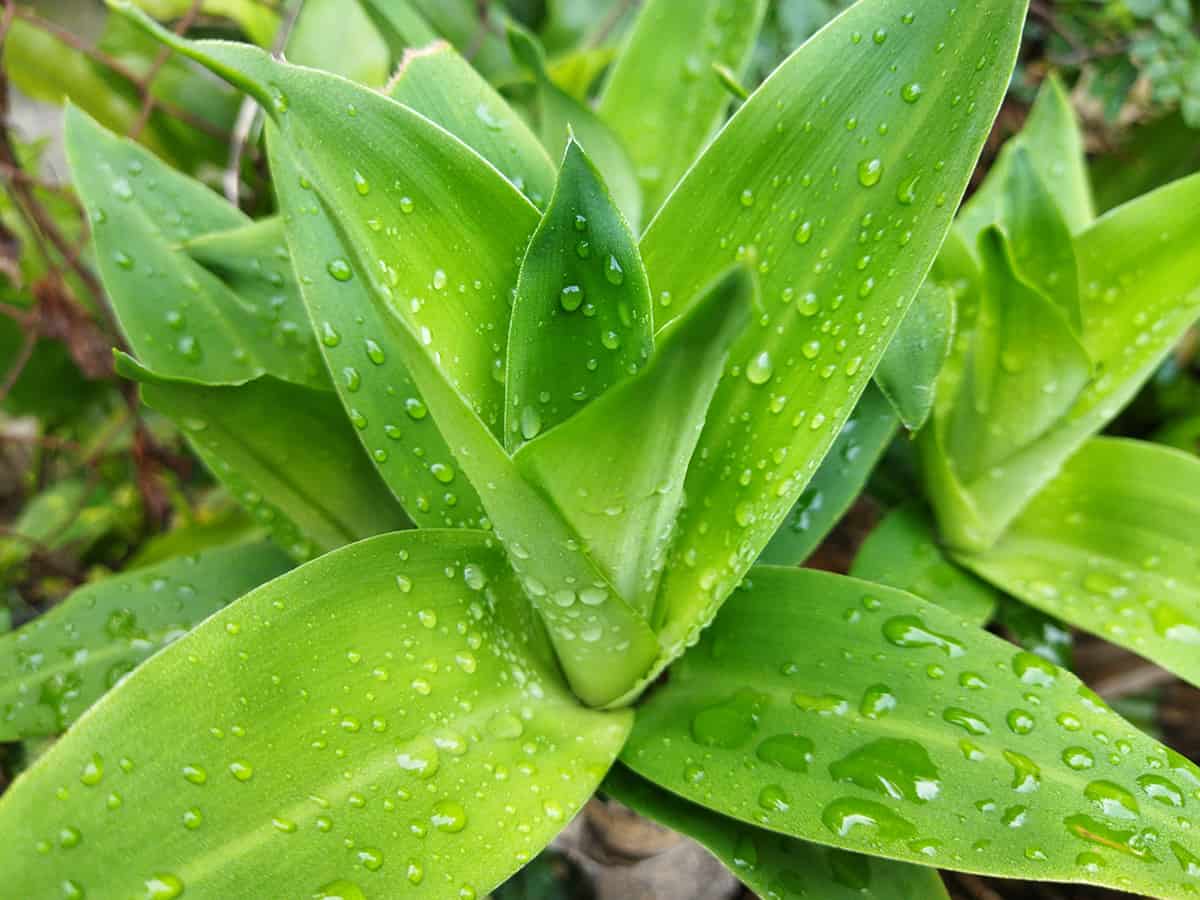
Agave plants require minimal water. Their thick leaves store water efficiently. During dry spells, they rely on this reserve. Provide water only when the soil feels dry to the touch. Too much water can harm agave plants, leading to root rot.
Water your agave sparingly in the cooler months. Decreased temperatures and lower evaporation rates mean your agave will need even less water. In contrast, give your plant a little extra during hot, dry summers. But always ensure good drainage to avoid waterlogging.
Measure the amount of water carefully. For outdoor agaves, use a hose or watering can to wet the soil around the plant’s base. For potted agaves, pour water until it drains from the pot’s bottom holes. Allow the soil to dry completely between watering sessions.
Temperature and Humidity

Agave plants thrive in warm climates. Your agave needs day temperatures of at least 65-70°F. Night temperatures should not drop below 55°F. To grow agave, ensure these conditions in your environment. Agave tolerates dry air but avoids extreme humidity. High humidity may encourage fungal diseases.
In cooler regions, you must modify the environment for your agave. During winter, move your plant indoors to maintain temperature control. Outdoor agaves may need protective coverings to guard against low temperatures. Monitor the air around your agave for moisture content. Use dehumidifiers if necessary to reduce humidity indoors.
Your agave will show signs if the temperature or humidity is wrong. Yellow leaves may indicate cold damage. Soft, mushy leaves could mean too much moisture. Adjust your care routine to keep your agave healthy. Remember to provide good air circulation around the plant. This helps prevent issues related to high humidity.
Fertilizer
When growing Agave, fertilizer is not a primary concern. These hardy plants thrive in harsh conditions, requiring minimal feeding. If you choose to fertilize, do so sparingly.
A balanced fertilizer applied annually in the spring supports growth, enhancing the plant’s natural robustness.
Agave benefits from a formula that is low in nitrogen. Opt for a 10-40-10 or equivalent ratio. Overfertilization can lead to excessive growth, weakening the plant. Slower growth maintains leaf strength and overall health, which is especially important for these succulents.
In containers, Agave may require more frequent feeding. However, this should not exceed once every three months during the active growing season. A liquid fertilizer diluted to half strength reduces the risk of root burn.
Focus on strong light and warmth over fertilizer for optimal Agave care. These contribute significantly to the plant’s best form and color. Remember, less is more when it comes to feeding Agave.
Propagation
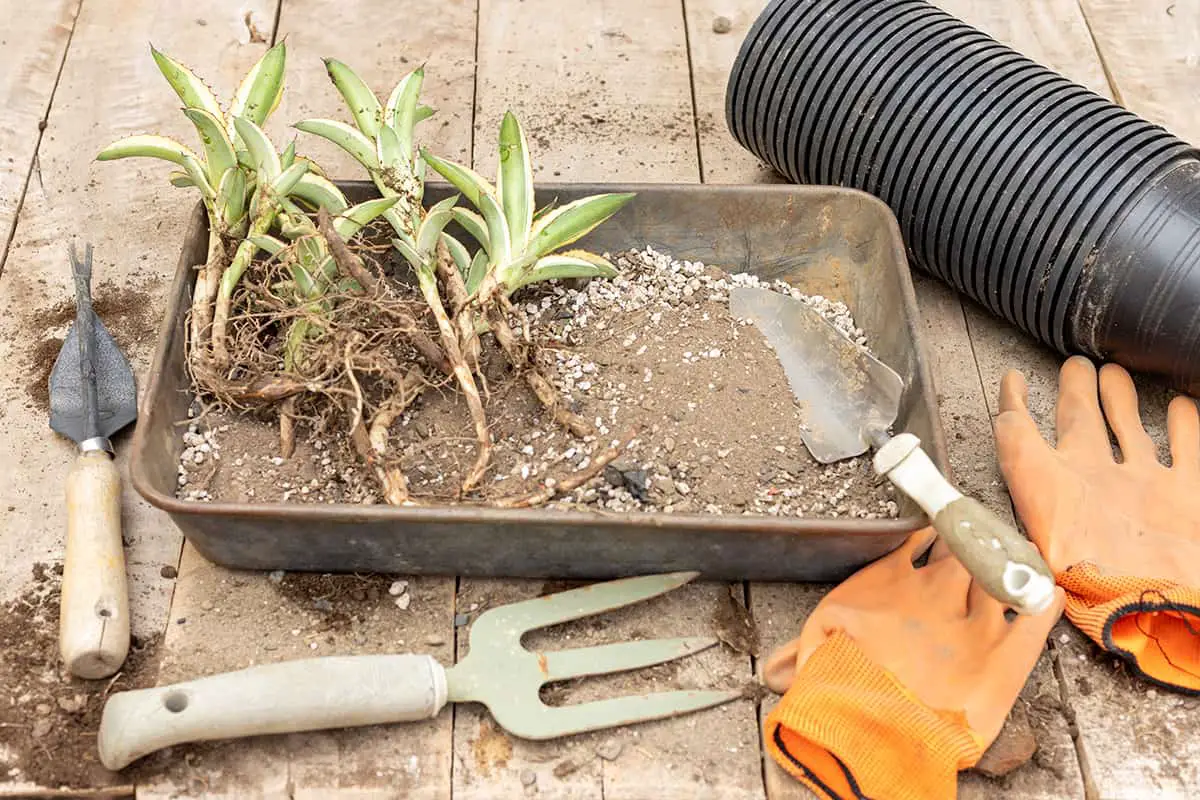
Agave plants offer an easy route to propagation. You start with cuttings or seeds.
Cuttings should come from a healthy parent plant. The best time to cut is the cooler parts of the year. After cutting, allow the piece to form a callous.
For seeds, you need a warm, moist environment. Plant them in well-draining soil and lightly cover the seeds with soil. Keep them away from direct sunlight. They will need a few weeks to germinate.
Roots from both methods take time to develop. Once rooted, transfer your young agave to a larger space. Ensure it has enough room to grow. Water the new plant moderately.
Pruning
When you grow Agave, pruning helps maintain plant health. You need to remove damaged or dead leaves.
This keeps your Agave tidy and can prevent pests. Cut close to the trunk using clean, sharp tools.
While Agaves rarely need pruning, it’s vital when they do. It improves light exposure and airflow. You need to make precise cuts. This encourages proper growth and reduces the chance of disease.
You can prune your Agave at any time of the year. However, the best time is in the spring. This gives your plant time to recover before the hot summer. Wear gloves and long sleeves to protect yourself from the sharp leaves.
Pruning also involves removing the flower stalk after blooming. This is because Agaves flower only once. After flowering, your Agave will generally die. By removing the stalk, you help the offspring, or “pups,” that grow around the base of the plant.
Potting and Repotting

Agaves are also slow-growing and need repotting infrequently.
Start with a container just larger than the plant’s current one. Ensure it has good drainage to avoid water buildup and root rot.
Select a soilless potting mix designed for succulents. This medium typically includes components like peat moss and sand, offering ideal aeration and drainage.
When repotting agave, handle the plant carefully to avoid injury from sharp leaf points. Wear protective gloves and consider wrapping the leaves in a thick cloth.
Your agave will signal when repotting is necessary. Common indicators include crowded roots, top-heaviness, or halted growth.
Repot during the warmer months to give your agave the best chance to establish in its new pot. After repotting, water the plant sparingly to encourage the roots to seek moisture and grow strong.
Common Problems & Troubleshooting
When you grow agave, you may encounter some challenges.
Frost Damage is a concern for agave plants. On cold nights, protect your agave by covering it with a cotton sheet. Ensure the sheet doesn’t touch the plant directly. For added warmth, a 60-watt bulb placed under the cover can help, but it must not make contact with the plant or cotton. Remember, never use plastic sheeting as it can harm your plant.
Pests, like the agave snout weevil, can be detrimental. These pests bore into the plant, causing it to collapse. If you notice a problem, remove and destroy the affected parts of the plant. Preventatively, you can apply insecticidal treatments during the growth season.
Overwatering can lead to root rot. Agave plants require well-drained soil. Water sparingly and allow the soil to dry between watering sessions. If you suspect overwatering, cease watering immediately and let the soil dry out completely.
Light is vital for agave health. Insufficient light leads to leggy, weak plants. Position your agaves where they can receive full sunlight. If the leaves yellow, this may signal too much direct light. In this case, provide afternoon shade to reduce stress.
Agave Varieties
Agave plants come in various sizes and forms, each with unique features that make them a stunning addition to your landscape. Here’s a closer look at six popular agave varieties.
Agave Americana (Century Plant)
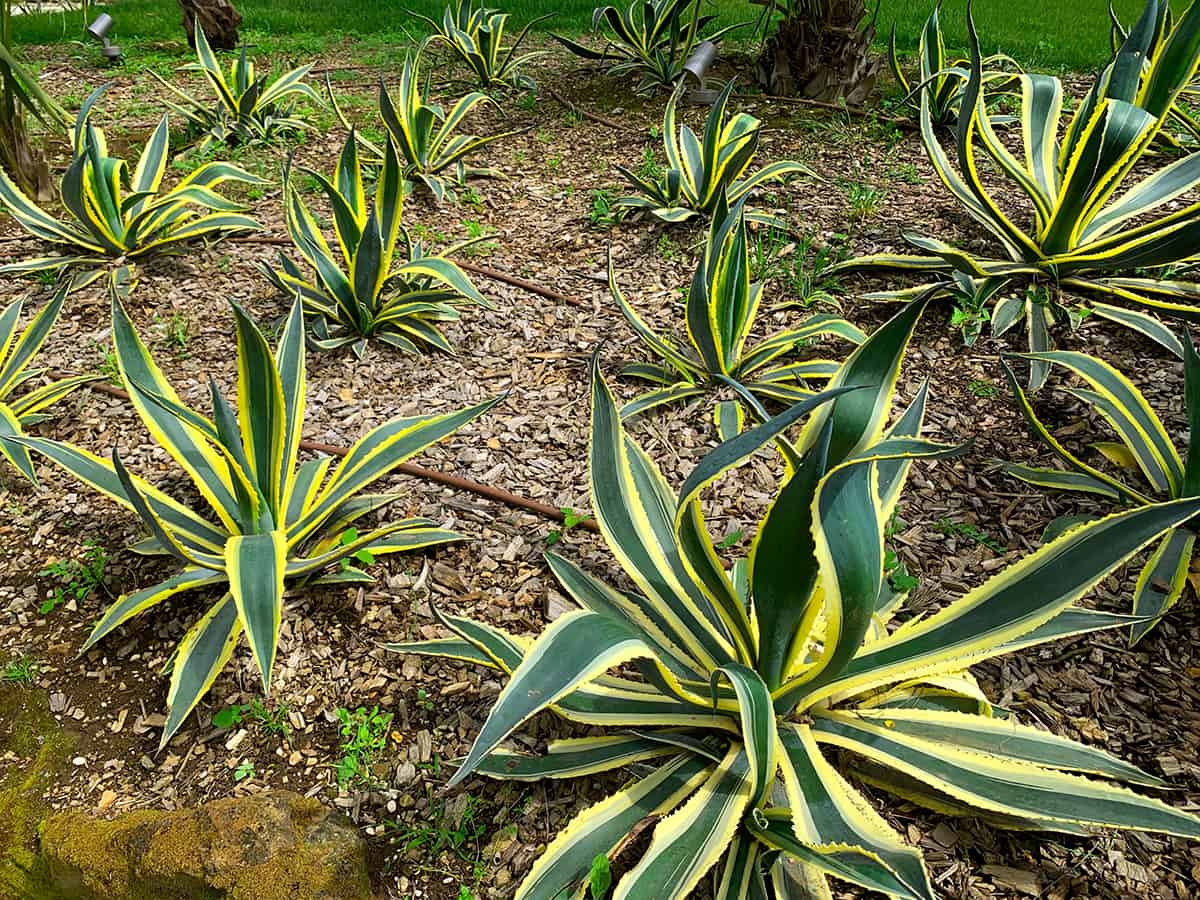
Agave Americana, commonly known as the Century Plant, is a large and impressive variety. Your garden can be graced with its thick, pointed leaves that may span up to six feet in length. It’s called the Century Plant because it was once thought to bloom only once every 100 years, but in fact, it typically blooms after 10 to 30 years.
Agave Attenuata (Fox Tail Agave)

The Fox Tail Agave offers a soft look with its smooth, spineless leaves. Perfect for adding a lush feel to your space, its leaves form a large rosette that cascades gracefully. Agave Attenuata does not have sharp edges, making it a safer choice if you have pets or children around.
Agave Tequilana (Blue Agave)
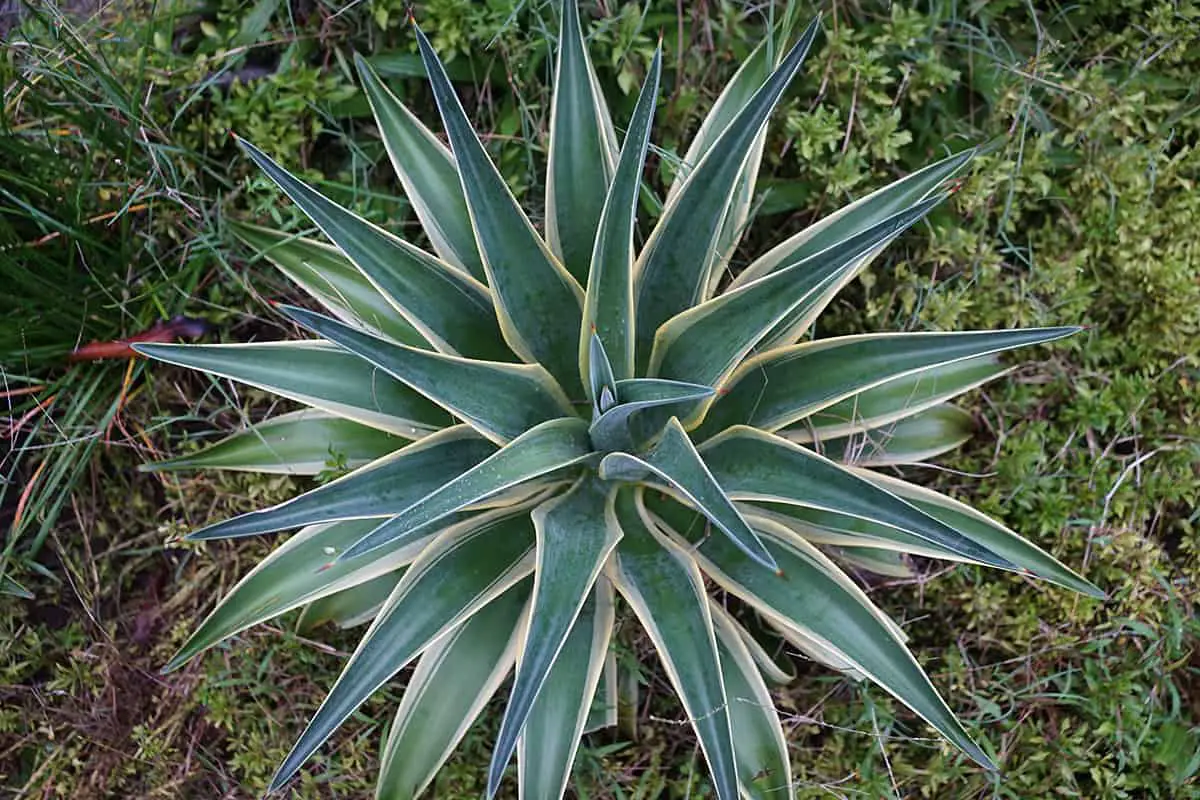
Famous for being the primary ingredient in tequila, the Blue Agave thrives in sandy soils and full sun. Its blue-green leaves are long, slim, and have a pointed apex. Blue Agave is a strong, drought-tolerant plant, perfect for a low-maintenance garden.
Agave Victoriae-Reginae
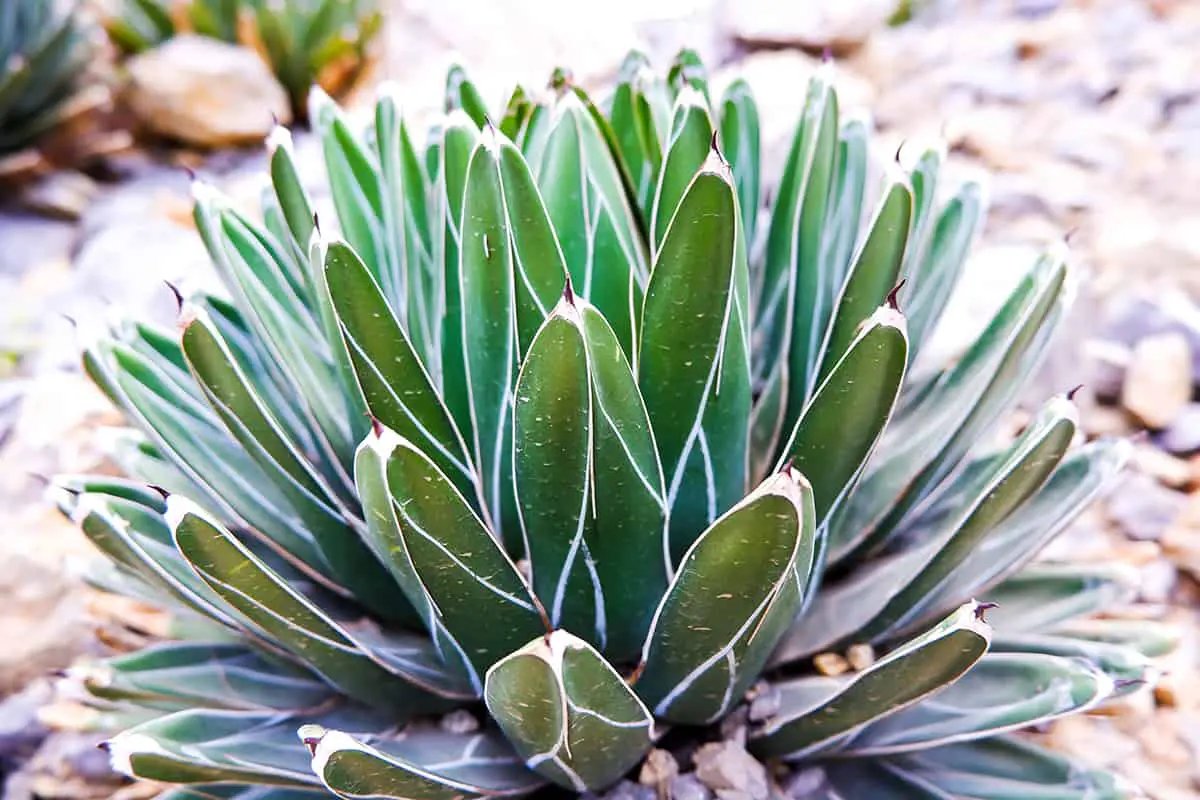
This small but striking variety shows off a compact size with short, tough leaves decorated with white markings. The Agave Victoriae-Reginae is an excellent option for those looking for a slower-growing species that can fit in smaller areas while still providing a distinctive visual appeal.
Agave Parryi (Parry’s Agave)

Your rock gardens and xeriscapes will benefit from the addition of Parry’s Agave. It has a compact form with gray-blue leaves. It is a good choice for higher elevations or northern climates due to its resilience to cold temperatures.
Agave Angustifolia
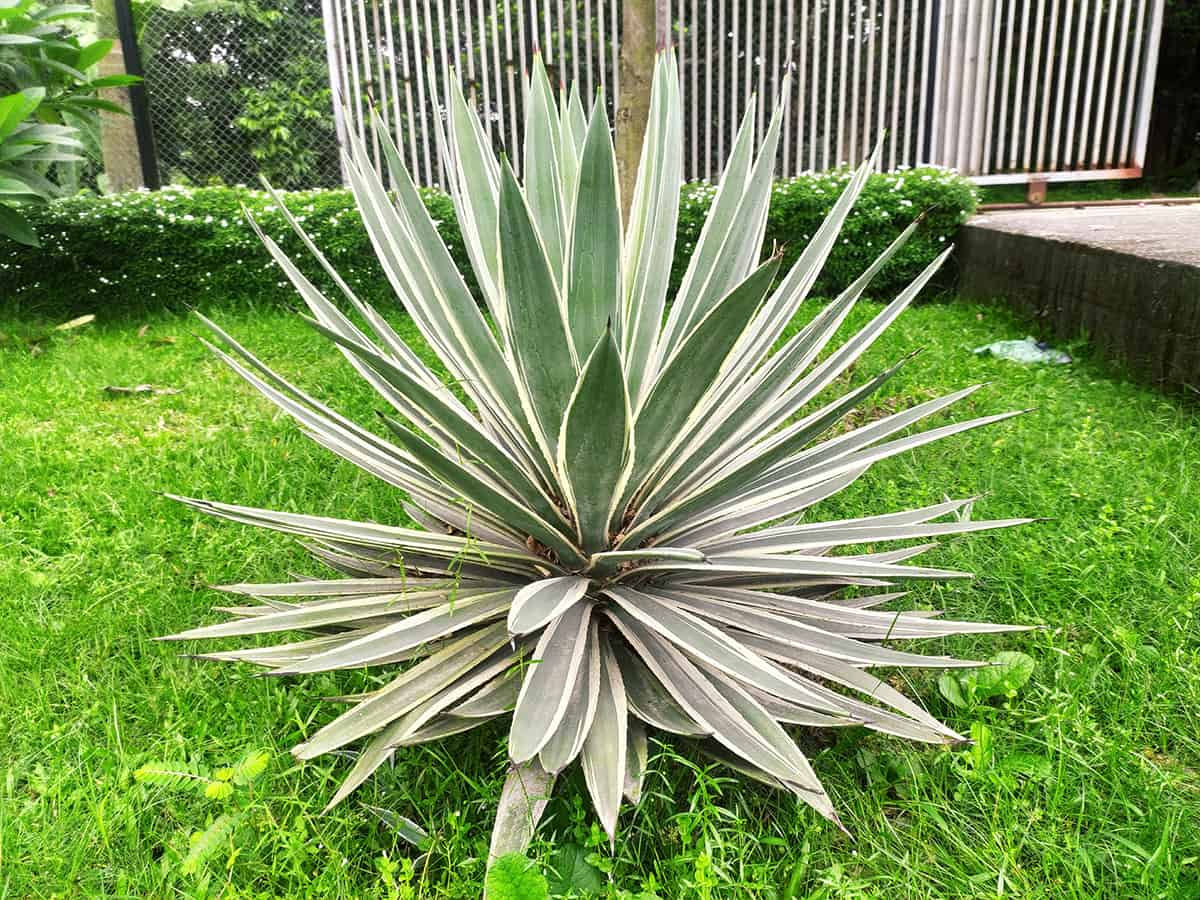
Lastly, Agave Angustifolia is a versatile species that adapts well to various environments. It has narrow leaves that typically form a dense rosette shape. This hardy plant can endure both drought and moist conditions, offering flexibility in garden placement.
Frequently Asked Questions
What are the best practices for planting agave in indoor environments?
You should choose a bright spot by a window for your agave to ensure it gets plenty of sunlight. A well-draining pot with a hole at the bottom is essential to prevent water from pooling and causing root rot. Use sandy, well-aerated potting soil and allow the soil to dry completely before watering again.
Can agave be successfully grown in water, and if so, how?
Although growing agave in water is not typical, it can be done with care. Start with a young agave and a container large enough to support its size. Then, make sure to submerge the roots in water while keeping the base and leaves above the water. Replace water weekly to prevent algae and bacterial growth.
How long does it typically take for an agave plant to reach maturity?
Agave plants grow slowly and can take between 10 to 20 years to reach maturity and flower, a process known as “bolting”. Some species may take longer. Once an agave flowers, it usually dies, but it often leaves behind offspring plants, called “pups”, to continue its legacy.
